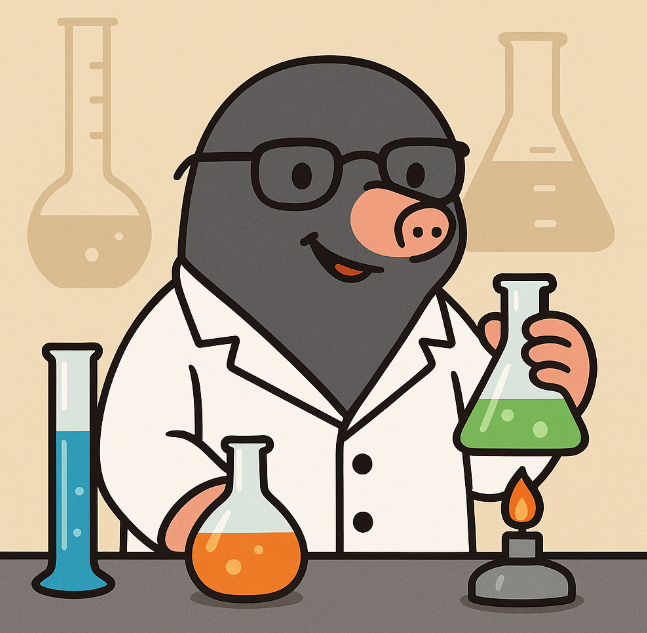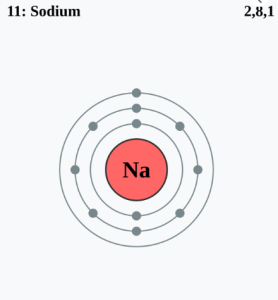
The Enormous Secret Inside Avogadro’s Number
First, Happy Mole Day!
Imagine holding a single grain of rice in your hand. Now imagine that grain multiplied again and again until you had enough to fill every ocean, desert, and mountaintop on Earth. That level of mind-boggling scale comes close to what scientists deal with when they talk about Avogadro’s number.
Avogadro’s number is 6.022 × 10²³, and it tells us how many atoms or molecules are in one “mole” of a substance. That’s not just a random figure—it’s a cornerstone of modern chemistry and physics. Without it, we couldn’t calculate chemical reactions, measure gases, or even understand the building blocks of life itself.
What Exactly Is Avogadro’s Number?
At its heart, Avogadro’s number is a conversion tool. Think of it as the scientist’s version of a dozen. Just as “12” means a dozen eggs, 6.022 × 10²³ means a “mole” of particles. Instead of eggs, though, we’re talking about unimaginably tiny atoms or molecules.
This number was named after Amedeo Avogadro, an Italian scientist who lived in the 19th century. He proposed that equal volumes of gases contain the same number of molecules, regardless of the type of gas. His idea laid the foundation for what later became Avogadro’s constant, fixed in 2019 as one of the seven defining constants in the International System of Units (SI).
Why Do We Need Such a Big Number?
Atoms are so small that counting them one by one is impossible. For example, a single drop of water contains about 1.7 sextillion molecules—that’s a 17 with 20 zeros after it. Instead of talking about those absurdly large numbers, scientists use the mole as a shortcut.
Imagine baking bread. The recipe calls for flour, water, yeast, and salt. You measure in cups, not individual grains of flour. Similarly, chemists use moles, not individual atoms, to balance their “recipes” for chemical reactions. Avogadro’s number makes this math possible.
Everyday Analogies: Making the Unthinkable Thinkable
Numbers like 10²³ can feel abstract, so let’s bring them down to Earth:
- If you had Avogadro’s number of marbles, they would cover the entire planet in a layer several miles deep.
- If you stacked coins one by one, Avogadro’s number of coins would form a tower reaching far beyond our galaxy.
- If each atom in a mole were a person, every human who ever lived could have their own Earth-sized planet to stand on.
And what if you had a mole of moles?
These analogies remind us how powerful—and humbling—this number is.
How Scientists Use Avogadro’s Number
Avogadro’s number is not just trivia for textbooks. It’s a practical constant used daily in labs, industries, and even space exploration.
- Medicine: Pharmacists use it to determine how many molecules of a drug a patient receives in each dose.
- Energy: Physicists rely on it to understand reactions inside nuclear reactors or stars.
- Environment: Atmospheric scientists use it to calculate the number of molecules in the air, which helps them track greenhouse gases and pollution.
- Technology: Semiconductor manufacturers depend on molecular precision—down to individual atoms—to build microchips.
In each case, Avogadro’s number acts like a bridge between the microscopic world of atoms and the macroscopic world we live in.
A Quick Glimpse at the Science
How did scientists even figure out this constant? Early estimates came from studying gases, crystals, and even oil films spread on water. In modern times, ultra-precise measurements involve X-ray crystallography and silicon spheres polished to near perfection.
The 2019 SI redefinition officially locked Avogadro’s number at exactly 6.02214076 × 10²³ per mole, ensuring that our scientific measurements remain consistent across the globe. This isn’t just bookkeeping—it underpins everything from chemistry classes in high school to research at the frontiers of quantum physics.
Why It Matters Beyond the Lab
So why should you care about Avogadro’s number if you’re not a chemist? Because it quietly powers the technologies and comforts of everyday life.
- The phone in your pocket relies on materials engineered atom by atom.
- Clean water systems use precise chemical balances to ensure safety.
- Renewable energy technologies like solar cells depend on nanoscale science that can’t function without Avogadro’s constant.
In short: every breath you take, every sip of coffee you enjoy, and every battery you charge is tied, in some way, to this cosmic-sized number.
Bringing It Back to You
Avogadro’s number is not just a piece of scientific trivia—it’s a reminder of our ability to measure, understand, and harness the tiniest building blocks of matter for human progress.
Next time you stir sugar into your tea or watch the fuel gauge in your car, remember: hidden inside those ordinary actions are countless molecules, quietly obeying a law of nature that scientists have captured in one astonishing constant.
Conclusion: The Power of Knowing the Invisible
Avogadro’s number—6.022 × 10²³—gives us a way to see the invisible, count the uncountable, and connect the atomic scale with the world we touch. It is a scientific Rosetta Stone, allowing us to translate between chemistry’s language of atoms and our everyday experiences.
Understanding it isn’t just for scientists—it’s for anyone who wants to marvel at the hidden patterns that make life, technology, and the universe itself possible.
So, what everyday object makes you think about the invisible world of atoms? Share your thoughts—we’d love to hear how you see the science behind the ordinary.



